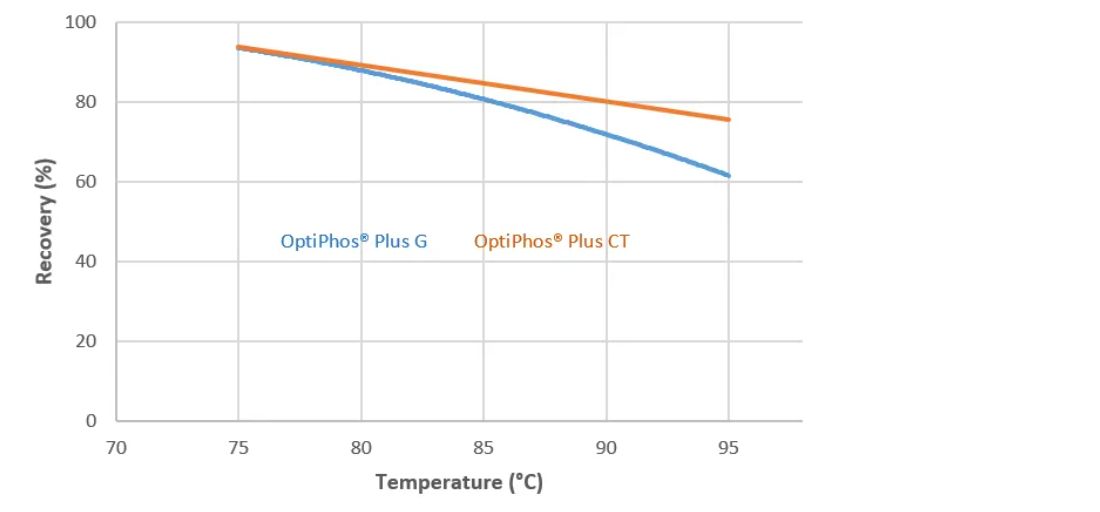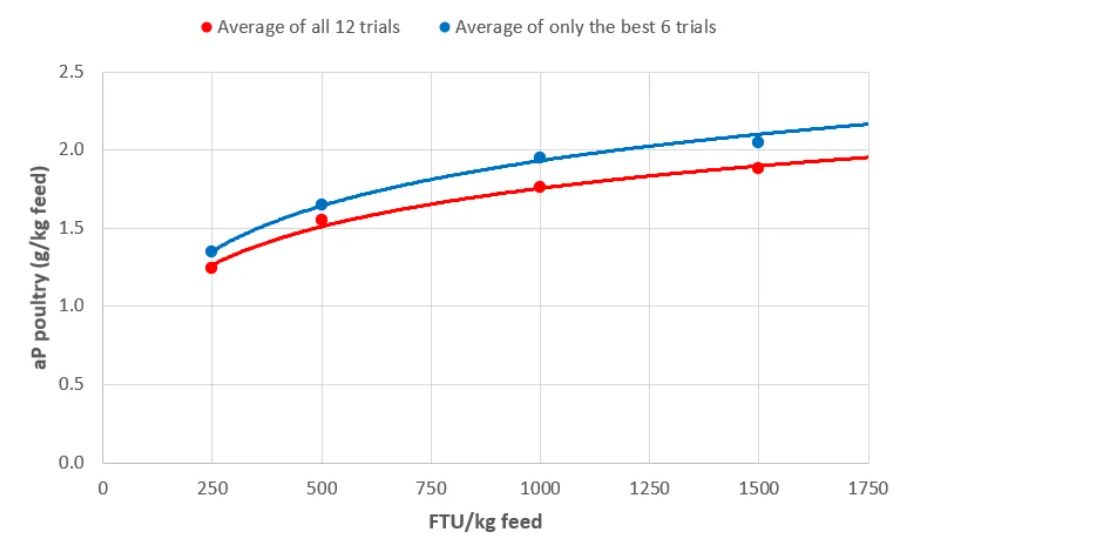Exogenously added phytase in feed has already been in practice for more than 25 years. It is used to liberate phosphorus (P), bound to phytate present in raw materials, lowering the feed cost by reducing the amount of added inorganic P. At the same time, environmental sustainability is improved, as P excretion to the environment is reduced.
Causes of P deficiency
There are two major reasons for P deficiency when using a phytase in feed: low heat stability of the phytase and an overestimation of its P matrix values. In the first case, this leads to lower than expected phytase levels in the final feed, reducing the P release from phytate. In the case of overestimating the P matrix values, too much inorganic P is removed from the feed, which is not compensated by sufficient P release from phytate. Both reasons will result in a P deficient diet, causing skeletal problems and reduced animal performance.
A heat stable phytase
To avoid the breakdown of the added phytase during pelleting, it is required that the phytase demonstrates a high thermostability until at least 85oC. An overview of the average recovery of a novel intrinsically heat stable phytase (OptiPhos Plus), determined in over 10 pelleting studies conducted in the EU and in the USA, is shown in Figure 1.

As the universal definition of stability stipulates that "stability is achieved when recovery of the active substance is above 80% of the original value", it can be seen that OptiPhos Plus can claim an intrinsic heat stability at 85oC when applied in the granular form (G). When a coated version (CT) is used, a stability up to 90oC, and even 95oC with acceptable losses of activity is observed.
Requiring reliable P matrix values
P matrix values provide information to a nutritionist about how much inorganic P can be replaced by the incorporation of the phytase into the feed. To provide reliable matrix values, multiple trials need to be conducted. With OptiPhos Plus, 12 trials based on digestibility and bone ash responses have already been carried out to determine the average available P (aP) improvement for different inclusion levels (Figure 2).

In this graph, the average of the six trials giving the highest aP response is also indicated. The response at 1,000 FTU/kg, for example, provides an aP matrix value of 1.76 g aP/kg of feed when considering all trials, but 1.96 g aP/kg of feed when considering the six trials giving the highest aP response. This difference might trigger phytase suppliers to use only the best trials for establishing the P matrix values. However, this increases the risk for a nutritionist that P deficiency issues might occur, leading to lower animal performance. Therefore, it is better to rely on average P matrix values of all conducted trials, and to not just rely on the best ones.
EU approval
Huvepharma received EU authorization for the use of OptiPhos Plus in all pig and poultry species on December 17th 2020 at a minimum inclusion level of 250 FTU/kg. This EU registration demonstrates that OptiPhos Plus is shown to be efficient and safe for use. Launched in March 2019 outside the EU, OptiPhos Plus has already proven itself in the field. With this EU approval, the EU market can now also be served, and the further worldwide rollout will be continued in 2021.
Conclusion
Excellent recovery of phytase in pelleted feed needs to be guaranteed combined with reliable and safe P matrix values originating from multiple trials, in order to avoid any risk of P deficiency at farm level.
For more information about OptiPhos Plus, click here.



